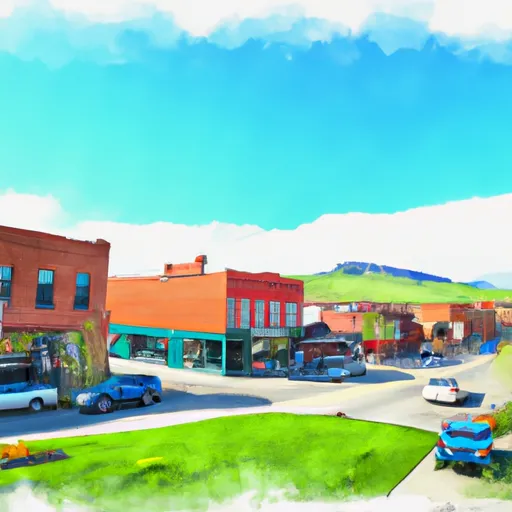-
 Snoflo Premium
Snoflo Premium
Get unlimited access to all our content
With no Ad interruptions! - Start Your Free Trial Login with existing account
Bozeman
Eden Index
Climate
7.4
•
Recreation
2.7
•
Community
3.2
•
Safeguard
4.7/10

Bozeman, Montana is nestled in the Rocky Mountains and has a continental climate. Winters are cold with an average snowfall of 86 inches, while summers are mild with an average temperature of 75°F. The city is located near the Gallatin River, which is a tributary of the Missouri River and provides ample opportunities for fishing, kayaking, and rafting. Bozeman is also situated near several mountain ranges, including the Bridger Range, providing opportunities for hiking, skiing, and mountain biking. The area is home to several hydrology constituents, including the Gallatin National Forest, Yellowstone National Park, and the Madison and Missouri Rivers, which provide recreation opportunities as well as important sources of water for the region.
What is the Eden Index?
The Snoflo Eden Index serves as a comprehensive rating system for regions, evaluating their desirability through a holistic assessment of climate health, outdoor recreation opportunities, and natural disaster risk, acknowledging the profound impact of these factors on livability and well-being.
Climate Health Indicator (CHI): 7.4
Bozeman receives approximately
548mm of rain per year,
with humidity levels near 63%
and air temperatures averaging around
6°C.
Bozeman has a plant hardyness factor of
4, meaning
plants and agriculture in this region thrive during a short period during spring and early summer. Most
plants will die off during the colder winter months.
By considering the ideal temperature range, reliable water supplies, clean air, and stable seasonal rain or snowpacks, the Climate Health Indicator (CHI) underscores the significance of a healthy climate as the foundation for quality living.
A healthy climate is paramount for ensuring a high quality of life and livability in a region, fostering both physical well-being and environmental harmony. This can be characterized by ideal temperatures, reliable access to water supplies, clean air, and consistent seasonal rain or snowpacks.
Weather Forecast
Streamflow Conditions
Missouri Headwaters
Area Rivers
Missouri Headwaters
Snowpack Depths
Missouri Headwaters
Reservoir Storage Capacity
Missouri Headwaters
Groundwater Levels
Recreational Opportunity Index (ROI): 2.7
The Recreational Opportunity Index (ROI) recognizes the value of outdoor recreational options, such as parks, hiking trails, camping sites, and fishing spots, while acknowledging that climate plays a pivotal role in ensuring the comfort and consistency of these experiences.
Access to outdoor recreational opportunities, encompassing activities such as parks, hiking, camping, and fishing, is crucial for overall well-being, and the climate plays a pivotal role in enabling and enhancing these experiences, ensuring that individuals can engage in nature-based activities comfortably and consistently.
Camping Areas
| Campground | Campsites | Reservations | Toilets | Showers | Elevation |
|---|---|---|---|---|---|
| Battle Ridge | 13 | 6,402 ft | |||
| Chisholm | 10 | 6,721 ft | |||
| Carbella | None | 4,984 ft | |||
| Spire Rock | 22 | 5,608 ft | |||
| Langohr | 12 | 6,137 ft | |||
| Fairy Lake | 9 | 7,706 ft | |||
| Hyalite Below Dam Camping | 6 | 6,659 ft | |||
| Canyon | 14 | 5,080 ft | |||
| Tom Miner | 16 | 7,117 ft | |||
| Hood Creek | 18 | 6,729 ft |
Catastrophe Safeguard Index (CSI):
The Catastrophe Safeguard Index (CSI) recognizes that natural disaster risk, encompassing floods, fires, hurricanes, and tornadoes, can drastically affect safety and the overall appeal of an area.
The level of natural disaster risk in a region significantly affects safety and the overall livability, with climate change amplifying these risks by potentially increasing the frequency and intensity of events like floods, fires, hurricanes, and tornadoes, thereby posing substantial challenges to community resilience and well-being.
Community Resilience Indicator (CRI): 3.2
The Community Resilience Indicator (CRI) recognizes that education, healthcare, and socioeconomics are crucial to the well-being of a region. The CRI acknowledges the profound impact of these elements on residents' overall quality of life. By evaluating educational resources, healthcare accessibility, and economic inclusivity, the index captures the essential aspects that contribute to a thriving community, fostering resident satisfaction, equity, and social cohesion.

